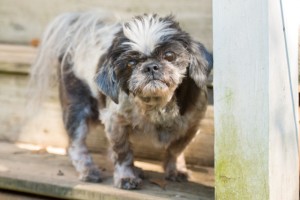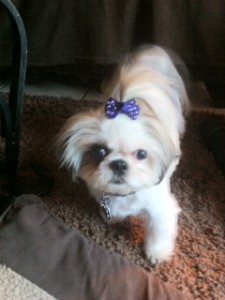Adopting Dogs With Special Needs
 Their bodies may be imperfect, but their spirits remains intact.
Their bodies may be imperfect, but their spirits remains intact.
So it is said about the special needs dog. Although caring for one can be challenging, more and more people are opening their hearts and their homes and adopting them. For this reason, more and more dogs who might otherwise be euthanized are being given a new “leash” on life.
Experts stress the importance of not viewing special needs dogs as “handicapped.” Although they have certain limitations (including partial paralysis, three leggedness, blindness or deafness), they’re not “aware” of them, and can be as active and affectionate as any other dog.
Adopters of special needs dogs insist the rewards outweigh the work. Many use social media to share their experiences, to interact with owners like them, and to encourage others to adopt. They don’t see these dogs’ medical or physical problems as a shortcoming, and don’t believe it makes them any less of a dog.
Those interested in adopting a special needs dog should first fully inform themselves about that dog’s condition, limitations, and maintenance. This includes meeting with their vet, requesting a tutorial on administering medications, and asking if they will make house calls. If not, they should ask to be referred to someone who will.
The quality of life for special needs dogs has been greatly enhanced by the growing number of products available to their owners. There are pet diapers, no-slip boots, orthotic braces, prosthetics, and front, back, combination and amputee harnesses. Ramps, pet steps, pet stairs and pet carts. Adjustable pet wheelchairs that can accommodate dogs weighing up to 180 pounds. And because partially paralyzed pets frequently get carpet burns when out of their chairs, there are washable, heavy-duty “drag bags” to protect their back ends.
Sadly, dogs who are blind or deaf have been characterized as aggressive, unpredictable, untrainable, prone to other health issues, and even a shorter life span. Studies, however, have proven otherwise. They have shown that despite their obvious deficiencies, these dogs are generally quite healthy and capable of living long, otherwise normal lives. And that, whether blind or deaf, they are no more aggressive, unpredictable or untrainable than sighted or hearing dogs.
Blind dogs are trained through the use of both sound and scent cues. By relying on their highly developed sense of smell, their noses let them know where and what things are, and when combined with their owners’ reassuring voice and touch, helps them live as normally and comfortably as possible.
They quickly learn and “map out” their surroundings, and for added protection, have their own “go to” place, created by putting their food and water bowls, doggie bed, kennel, and several favorite toys (squeaky toys or ones with bells inside are best) on a distinctive mat, and never moved. A carpeted runner or large area rug provides them with safe play area because the traction is good and the edges clearly discernible.
Sharp edges on furniture can be padded with bubble-wrap or foam pipe insulation to help prevent injury. Any stairways should be baby-gated, and a textured mat laid before each one to alert the dog to the gates’ proximity. And all outside activities, from pottying to playing, should be done either in a securely fenced yard or securely on leash.
Deaf or hard-of-hearing dogs are trained through the use of sign language or hand signals with treats as reinforcement. Vibrations are also used, such as walking with a “heavy foot” if their attention is elsewhere, and stomping close to their bed or near their head to waken them rather than touching and startling them. Lights can also be used as a teaching tool to get their attention, but, of course, this works best as night.
Since they bond instantly with their owners, placing their trust and safekeeping in their hands, deaf dogs always look to them for guidance and follow where their owner leads. As with blind dogs, all outside activities, from pottying to playing, should be done either in a securely fenced yard or securely on leash.
Because there is nothing inherently “wrong” with them, deaf dogs can do almost anything hearing dogs do. Many of them excel at agility and obedience, and make excellent therapy dogs.
As the owners of special needs dogs readily agree, their own lives have been irrevocably changed. By the sweetness and determination of the animals they adopted. By the smiles they elicit and the kisses they distribute. And most importantly, by the inspiration these dogs provide, not only for them, but for everyone around them.
Author: Nomi Berger



